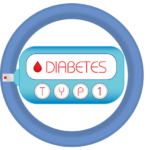Nutrisystem diet plan for Diabetics is a prefabricated, portion-controlled eating regimen that is delivered to your house.
Lean protein and carbs with a low glycemic index, like whole grains and non-starchy vegetables, are prioritized in some meals.
The distinctive quality of Nutrisystem D is that it was created especially for those with type 2 diabetes.
The diet strictly restricts fat and carbohydrates while providing a wide variety of high-protein and high-fiber meal options.
Long-term use can lower your AIC, help you burn fat, and enhance blood sugar levels. If you are pre-diabetic, it can dramatically lower your risk of developing type 2 diabetes.
The meals are prepared by knowledgeable nutritionists and are portion controlled. No meal contains any artificial flavors or sweeteners.
Each day, there are a total of 6 meals and snacks included in the Nutrisystem D programs. Breakfast, lunch, and dinner are included, with snacks coming about two to three hours later.
| You may also like to read: |
What Sets the Regular Nutrisystem Plan Apart from the Nutrisystem D Program?
The three main elements of Nutrisystem® D® weight loss programs are intended to assist diabetics in losing weight while managing Type 2 Diabetes safely and effectively:
- a balanced ratio of protein, fiber, healthy fats, and
- whole grains with a low glycemic index.
To maintain a consistent blood sugar level and prevent spikes, your diet plan calls for eating a well-balanced dinner and a snack every two to three hours. Along with a nighttime snack, you eat more frequently during the day.
A significant increase in fiber is only one way that the new Nutrisystem plan differs from the company’s normal offerings.
This regimen is ideal for diabetic people thanks to a few additional alterations to the formula. Here are a handful of the main variations.
Boost Your Protein.
The Nutrisystem D plan eliminates some of the excess fats and carbohydrates present in their standard meal options.
Instead, they have increased the number of high-protein menu alternatives. This is advantageous for people with diabetes, but it’s also useful if you want to gain muscle mass.
Less sodium and sugar.
For diabetes individuals, foods with high sugar or sodium content are bad news. Unfortunately, this also necessitates a decrease in the availability of fresh fruit on the menu. More spaghetti, bread, and leafy green veggies will be available to fill their place.
Fewer menu options.
Although not strictly a benefit, this distinction is important to note. With the Diabetic option, the menu is a little bit more constrained.
Given that they had to exclude items heavy in sugar, sodium, or fat, this makes it reasonable.
This plan is similar to other Nutrisystem food alternatives, but those aren’t made with blood sugar and diabetes in mind.
Some diets suit particular nutritional requirements, such as vegetarianism, as well as strategies to help you lose weight or maintain your target weight.
| You may also like to read: |
Is the Nutrisystem D Plan for Diabetics suitable for both men and women?
Your gender is one of the inquiries on the Nutrisystem website. This is so that a diet plan and calorie count can be tailored to your gender, medical history, and lifestyle. Depending on your responses, they offer various meals.
Your medical history is not accessible to or authorized by the Nutrisystem program, however, they can offer resources for your diet requirements or calorie counting if you’re trying to lose weight.
Pros of the Nutrisystem Diet Plan for Diabetics
The Nutrisystem diet offers several advantages, even though nutritionists do not advise it. The top two are practicality and space for variation.
Convenience:
People who follow the Nutrisystem diet program say it is simple to do so since the pre-portioned foods help keep calories low and encourage weight loss.
Some people find the convenience of having food delivered to their door to be enticing.
Variety:
Flexible meals, snacks, and supplemental nutrients can add variety to the menu. Simple grocery lists make it easier to buy these items.
Balance:
The daily calorie allowance ranges from 1,200 to 1,500, and a variety of foods are rich in fiber, protein, carbs, and fat.
Customers are advised to eat at least four servings of vegetables and one to two portions of fruit each day, and assistance is offered to individuals who may find this difficult.
Transitional assistance:
Once you’ve reached your ideal weight, Nutrisystem offers a weight-maintenance program. These plans may consist of a mix of meals and snacks or weekend meal plans. Naturally, there is a premium for these goods.
May result in weight loss:
The Nutrisystem diet’s reduced calorie intake has helped many people lose weight. The entrées and snacks included in the diet may also aid program participants in learning how to manage their portion sizes.
In one study, it was discovered that those who adhered to the Nutrisystem plan lost an average of 3.8% more weight over three months than a control group who got nutritional counseling and instruction [ref].
You don’t feel hungry at all:
The Nutrisystem diet is made to keep you satisfied. Even though it’s termed a diet, you shouldn’t feel the want to eat more.
You won’t feel hungry since the meals are designed to make you feel full until your next meal (three hours later), which prevents you from nibbling outside of the system.
| You may also like to read: |
Cons of the Nutrisystem Diet Plan for Diabetics:
Nutritionists do not advise this diet despite its ease. The Nutrisystem diet includes disadvantages that are both practical and health-related [ref].
Cost:
Nutrisystem isn’t affordable for everyone, like many commercial weight-loss programs.
Foods that have been excessively processed:
The prefabricated meals on the Nutrisystem diet have been heavily processed. The meals and snacks contain a variety of unusual components.
Possibly causes metabolic syndrome:
The Nutrisystem diet does not carry any known health hazards, although it does feature a lot of processed and frozen pre-made items.
The consumption of processed foods has been linked to health issues, such as metabolic syndrome.
Possibly encourages eating poorly:
The typical versions of some dishes on the Nutrisystem menu, such as snickerdoodle cookies, frozen pizza bowls, and double chocolate muffins, are heavy in calories, fat, sugar, and sodium.
This might make it more difficult for some people to pick wholesome, unprocessed, or minimally processed meals over-packaged items once their subscription is finished and they restart a normal diet.
Chronic diseases are linked to long-term intake of processed foods, according to research.
| You may also like to read: |




